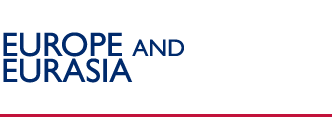Willingness to Pay for Development Signals Sustainability
Sustainability is the ultimate goal of any technical assistance project. There are various criteria to determine whether a project has been able to survive without USAID or other donor funding. Willingness to pay for services similar to those once developed under the project and delivered to other recipients free of charge can be one of them.
In the spring of 2007, Ukraine’s Rivne Oblast State Administration approved an action plan to create the Rivne Regional Industrial Park. InvestInRivne, an agency established in 2005 to attract investments to the oblast, was put in charge of its implementation.
Ruslan Svirsky, InvestInRivne’s deputy director, learned about the concept of industrial park while attending a training program for Foreign Direct Investment (FDI) Professionals conducted by USAID’s Local Economic Development (LED) project. At the training, one of the lecturers, the managing director of a Czech consulting and engineering company, did the conceptual design work and due diligence reports for the land-sites in four Ukrainian cities – Komsomolsk, Novohrad-Volynsky, Dzhankoy and Vinnytsya. The idea behind this effort was not only to help those four cities to attract investors, but to show how industrial park sites are prepared for investment in the Czech Republic, where per capita FDI are a dozen times higher than in Ukraine.
Rivne city had already created an economic development strategic plan with assistance from the LED project, and investment land development had been discussed in the context of that planning. With additional knowledge received through the training, Rivne Oblast decided to develop and conceptualize a tract of land for industrial investment. To their credit, the Oblast Administration and InvestInRivne did not wait for a donor to do the work for free. Instead, they decided to act independently and pick up the tab. They placed an order with the Czech company independently with InvestInRivne covering service cost, which was partly reimbursed by the Administration.
 |
| Ruslan Svirsky, InvestInRivne Deputy Director and one of the first graduates of the LED project’s training program for FDI professionals |
The Rivne Regional Industrial Park is a 126-hectare green-field midway between the cities of Rivne and Kostopil. "We've located the park between the two populous localities to ensure a proper labor force supply," said Svirsky.
Now the industrial park project is in the stage of selecting a potential developer. ”I'm sure that if we present the park – even through direct-mail advertising – among real estate companies in Kyiv, we will receive an instant interest. But I'm not sure that this result will be the most effective. Our preference would be to get Western developers or Western investors," explained Svirsky, who indicated that Czech, German, Irish and Portuguese developers are presently considering the project. He says that this is a result of the Czech consultant’s reports, which were distributed among Western developers.
As for the FDI training, Svirsky says it was certainly useful, even with his three-year’s prior experience in an investment development business. “The curriculum is built in a way that allows the program's participants to clearly structure their knowledge and master a tool-kit required for successful day-to-day work of FDI professionals.”
Since its initiation in October 2004, the LED project has focused on attracting jobs-generating investments as a key factor for local economic development. The overwhelming majority of economic development strategies that designed with assistance from the project in 44 Ukrainian cities (as of January 1, 2008) highlight investment attraction as a critical issue and comprise corresponding action plans. As a result of project assistance, more than 20 cities have launched investment attraction programs, and 23 have allocated land parcels for investment. Sixty-three Ukrainians have been trained and certified as FDI professionals. These and other efforts have resulted in approximately $600 million worth of investments and the creation of 12,000 new jobs.
Back to Top ^ |


